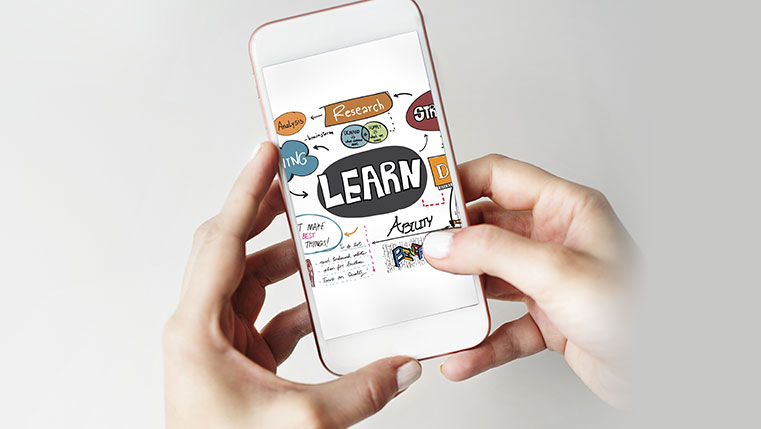5 E-learning Design Challenges Every Learning Designer Encounters

With the growing popularity of e-learning, the learning designer has to come up with design ideas and solutions to cater to a wide variety of learners. As a designer, you might run into e-learning design challenges. This blog will cue you in on five common design challenges and ways to fix them.
Challenge #1: Designing for the modern learner
The modern learner has a short attention span (less than 8 seconds according to a recent survey conducted by Microsoft), less time for learning, and a preference for learning that is customized to his needs. He wants the maximum returns from the training in the shortest possible time. So how can e-learning design rise to these challenges? Here are some solutions to consider.
a. Garner learner engagement quickly and continuously: The modern learner engages with learning that is intended to help him improve his performance or is relevant to his job. He wants precise information and if he realizes it will help him in his job, then his attention is up immediately.
To gain his attention, you can start by telling him how the learning unit will benefit him in specific ways. You will have to answer the ‘What is in it for me?’ (WIFM) question. You can be direct and to the point; for instance, you can say, “Want to get your customers excited about your products? This course has just the thing for you!” The point here is to address the need of the learner to get him engaged. But, ensure you subsequently use good design techniques such as immersive learning to involve the learner.
b. Training should aim at achieving performance goals: With short attention spans, the modern learner can absorb only so much information at a time. Your aim should be to organize the learning into core interactions that can meet performance goals but do not take too much of the learner’s time. Designing short learning modules that deliver small bursts of information can be the solution.
c. Provide just-in-time (JIT) learning: Short modules accessible on all devices provide JIT learning. They can be accessed on any device and are suited to the modern learner’s penchant for learning at the time of need and at his convenience.
Challenge #2: Designing a gamified e-learning experience
With gamification gaining popularity in e-learning design, you have to know how to incorporate game elements to improve learner engagement and increase motivation. Here are some tips.
a. Get the basics right: Decide first on why and how you want to use gamification in your course. The strategy will work only if it is suited to the subject and caters to needs of the audience and if it is tied to the learning objectives.
b. Use game elements for motivation: The primary motive in using gamification techniques should be to support the subject matter of the course and increase learners’ motivation. The goal should be to provide learners positive reinforcement. The game techniques you use must support the actions, behaviors, and skills they need to learn.
c. Tap into the intrinsic motivation of learners: Instead of providing them tangible awards such as gift cards or cash which act as external motivators, tap into the intrinsic motivations of learners. Intrinsic motivators can tap into their drive to succeed and achieve their goals. Game elements such as points, badges, awards, and trophies can be used in an e-learning course to achieve goal-oriented learning objectives and target intrinsically motivated behaviors. Employees will realize the value of the new behavior they have learned or the knowledge they have gained and continue using it. The element of competition is achieved through leaderboards. They display the score of learners and rank them.
Challenge #3: Designing for mobile devices
The ubiquity of mobile phones has made mobile learning popular. The designer has to know about e-learning design for the mobile device; it’s a different cup of tea to designing e-learning. Learning should be delivered as small nuggets of information, considering the physical dimensions of the device and when it will be accessed.
a. Know the objective: If the information is for retention, the learning design must provide opportunities to practice so that learners retain the facts, concepts, and processes for later use.
If the learning is intended for application or performance support, it should have an intuitive and efficient interface and well-indexed, searchable content so that the learner can easily access information required to support performance at the time of need.
b. Create an impact: If the mobile learning module has to create an impact, it has to be intuitive and easy to use. If the modules are difficult to navigate and follow, learners will lose interest. Create a simple and visually pleasing user interface and:
- Provide simple, consistent navigation
- Provide clear instructions where navigation is difficult
- Use a combination of auditory, visual, and text-based cues to direct the learner’s attention
Challenge #4: Designing a learner-centric course
E-learning design must focus on the specific learning outcomes desired from learners. So, designers must know how to keep learners involved in the process through their design. The course must be designed to be learner-centric. The methods of instruction must be focused on the learner rather than the instructor.
You can use techniques such as storytelling, humor, and scenario-based learning to keep learners emotionally involved in the process.
a. Storytelling: Using stories in your e-learning course will emotionally involve learners. This is because humans connect readily to stories and remember them for the emotional impact they create. They are retained longer in memory than facts and data. Stories can be used to present complex and abstract facts and they make them easy to remember. Stories can be incorporated in courses as comic strips, videos, interactive timelines, or audio narratives.
b. Scenario-based learning: Scenarios help participants learn at a deeper level. While creating scenarios, ensure they:
- Are relatable
- Reflect the realities and challenges the learner encounters at his workplace
- Involve mental processing and real-life thinking
c. Humor: An element of humor makes people more receptive to new thoughts and ideas, helps them learn better, and keeps them engaged because of the positive mood humor evokes. But use humor with care, keeping the cultural and language sensibilities of learners in mind.
Challenge #5: Designing interactivities
In e-learning design, interactive elements are mandatory in a course. But, they should support learning. Adding interactivities randomly will not help. They should be meaningful and the designer must know how to design the right kind and right amount of interactivities so as not to overload the learner.
Too much too soon: Do not include too many interactivities at the beginning of the course, as the learners will feel lost. A better alternative is to start the course with minimum interactivity and subsequently add interactive and responsive elements that gradually become complex as learners become comfortable with the existing levels.
These are some of the e-learning design challenges a designer has to deal with when designing courses. They can be overcome if the designer employs the right techniques while keeping the learner in mind.





